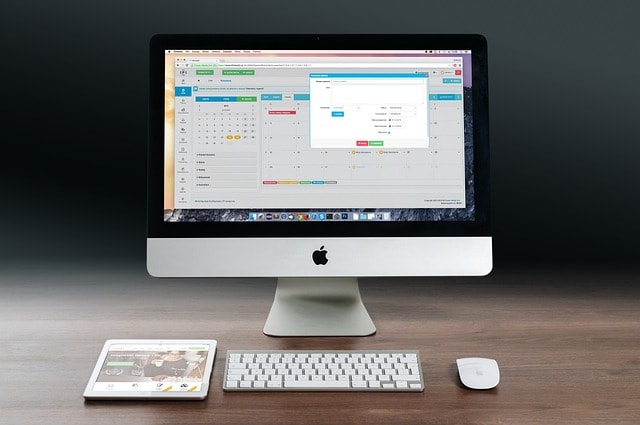Navigating the proper usage of government email systems demands awareness of best practices, ensuring secure and professional communication while safeguarding sensitive information. So, Which of the Following is a Best Practice for Using Government Email? Government emails often serve as channels for critical correspondence, whether in the context of local departments, state offices, or federal agencies. Here’s a thorough guide to best practices for using government email, with specific attention to security protocols, content management, and contact etiquette.
Why Government Email Practices Matter
Using a government email comes with responsibilities that go beyond typical email usage. With government email systems often linking to vital agencies and sensitive data, ensuring security, accuracy, and proper decorum in communication becomes paramount.

This applies to staff across various departments, from state departments to military offices, congressional contacts, and local government agencies.
Understanding the guidelines and best practices helps employees, officials, and department heads maintain both the integrity and efficiency of their work. So, which of the following is a best practice for using government email? Let’s dive in.
Security First: Password and Authentication Protocols
One of the most fundamental practices for government email security lies in setting robust, unique passwords and maintaining high standards for authentication.

Given that government emails are gateways to valuable data, lax password practices can lead to unauthorized access and potential breaches.
- Set Strong Passwords: Avoid predictable phrases, and include a mix of characters. Using a minimum of twelve characters, blending uppercase, lowercase, numbers, and symbols, adds an extra layer of difficulty for intruders.
- Change Passwords Regularly: Updating passwords periodically, typically every three months, is a standard practice to limit exposure risks. When prompted by IT, immediately change any temporary or outdated password.
- Two-Factor Authentication: Enabling two-factor authentication (2FA) provides added security by requiring a secondary code to access email accounts, typically sent to a trusted phone number or generated through an authentication app.
- Avoid Personal Devices: Access government emails only from approved devices and secure networks. Personal devices often lack the same security protocols as government-issued ones, increasing risk exposure.
Content Management: Information Accuracy and Professionalism
The content of government emails must be handled with meticulous attention to accuracy and professionalism, as missteps can lead to errors that impact entire departments or agencies.
- Proofread for Errors: Before sending, review each email for errors in grammar, spelling, and factual accuracy. A small typo or inaccurate statement can cause confusion or require multiple follow-ups.
- Clear Subject Lines: Subject lines should be direct and descriptive. Instead of a vague title, choose a subject line that reflects the exact content, such as “Department Contact Update” or “Military Policy Review Meeting.”
- Avoid Sensitive Information in Email: Refrain from including sensitive information in emails, such as social security numbers or unencrypted contact information. Instead, reference secure files or encrypted documents as attachments when necessary.
- Use Correct Titles and Addresses: Address recipients with appropriate titles, such as President, Director, or Senator, and verify addresses in the contact list to prevent misdirected emails.
Handling Contact Information and Links
So, Which of the Following is a Best Practice for Using Government Email? Government emails often contain links to various websites and departments.

Here’s how to approach contact details and web addresses responsibly.
- Verify Website URLs: Avoid including unofficial URLs. Government websites usually end in .gov or .mil (for military), which helps verify their authenticity. Double-check links before sending.
- List Correct Department Contacts: Ensure contact details, phone numbers, and addresses align with the official department directory. Including accurate information saves time and avoids confusion for recipients who may need to reach the correct office or department.
- Avoid Personal Links: Keep the focus on verified government websites rather than personal or external links, which could compromise professionalism or inadvertently introduce risks.
Regular Updates and Best Practice Reviews
Keeping government email systems secure means ongoing updates and practice reviews. Regularly updated policies help prevent common issues, secure sensitive information, and provide structured guidelines.
- Systematic Reviews: Government departments often set annual or biannual email policy reviews. Employees should familiarize themselves with any new guidelines or tools for secure communication.
- Periodic Email Cleanup: Set aside time monthly or quarterly to organize and delete unneeded emails. Decluttering email inboxes improves system performance and minimizes data retention risks.
- Stay Updated on Cybersecurity: Security protocols evolve, and government agencies often release updates or steps to improve protection measures. Follow these updates and engage in periodic cybersecurity training to stay aware of potential risks and solutions.
Responding to Common Email Scenarios and Phone Numbers
Certain scenarios, like address errors or urgent congressional notifications, require particular handling methods to maintain security and professionalism.
- Handling Address Errors: If you accidentally enter the wrong email address or receive a bounced message, promptly double-check the contact list and resend the email with the correct information.
- Follow-Up Protocols: When you don’t receive a reply on critical issues, politely follow up after a few days. Avoid sending multiple follow-ups in quick succession, as this may clutter inboxes.
- Managing Confidential Data: Only forward sensitive government information through approved channels. If sharing details related to the president’s office, state agencies, or other critical offices, verify the recipients and attach files using encrypted methods when possible.
Common Mistakes to Avoid
Avoiding mistakes in government email usage is as crucial as following the best practices. Here are some common pitfalls and ways to prevent them:
- Leaving Email Unattended on Public Computers: Leaving a government email account open on a public or shared computer is a critical security error. Always log out after every session, especially when using a shared device.
- Using Unverified Addresses: Sending emails to unverified addresses, especially when they include confidential attachments, can lead to unauthorized data exposure. Make it a habit to review addresses before sending.
- Copying Too Many Contacts: Overusing the CC field clutters communication and can expose sensitive data to unintended recipients. Opt for BCC if an email needs to reach multiple people without revealing others’ information.
- Neglecting Encryption Tools: Not all government emails automatically encrypt messages. For additional protection, check if your email client offers encryption options, especially when handling sensitive agency or department data.
Final Checklist for Government Email Best Practices
So, Which of the Following is a Best Practice for Using Government Email? To wrap up, here’s a handy checklist to keep your government email usage safe, efficient, and compliant:
- Review passwords and enable two-factor authentication for added security.
- Proofread emails to catch errors before sending, focusing on accuracy and professionalism.
- Keep contact information up-to-date, including phone numbers, addresses, and department titles.
- Avoid including sensitive data directly in the email body; use encrypted attachments if needed.
- Stay informed about cybersecurity best practices and policy updates from your agency, congress, or office.
- Limit recipient lists and avoid exposing contacts unnecessarily.
- Use trusted websites ending in .gov or .mil for secure link sharing.
Following these practices ensures that your use of government email aligns with high standards of security, professionalism, and efficiency. Taking a proactive approach to each of these steps protects you, your agency, and the people you serve.



